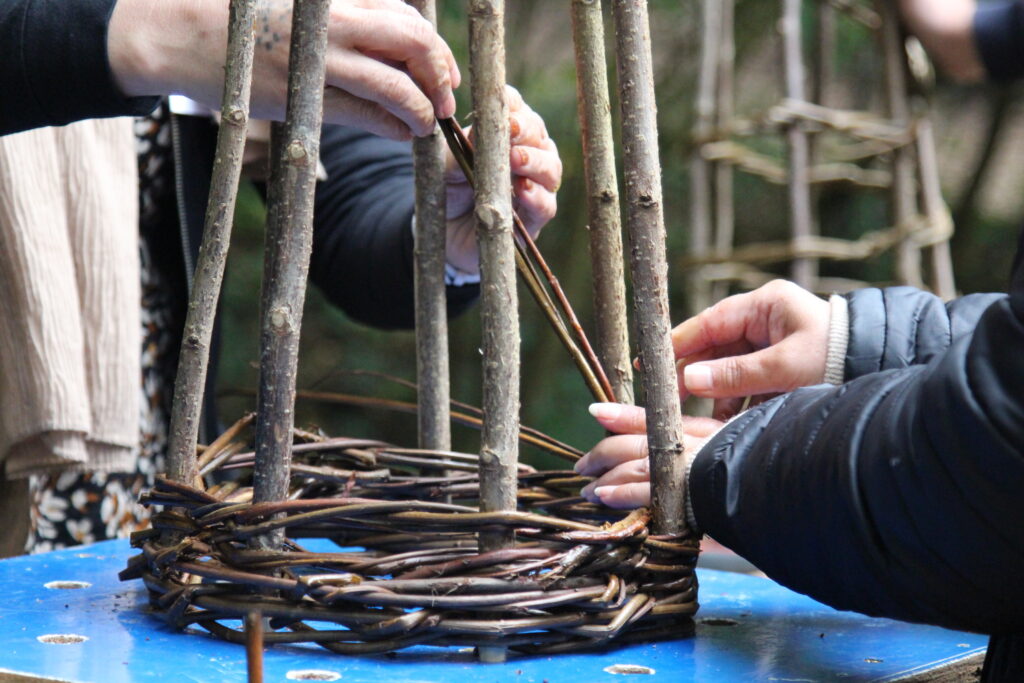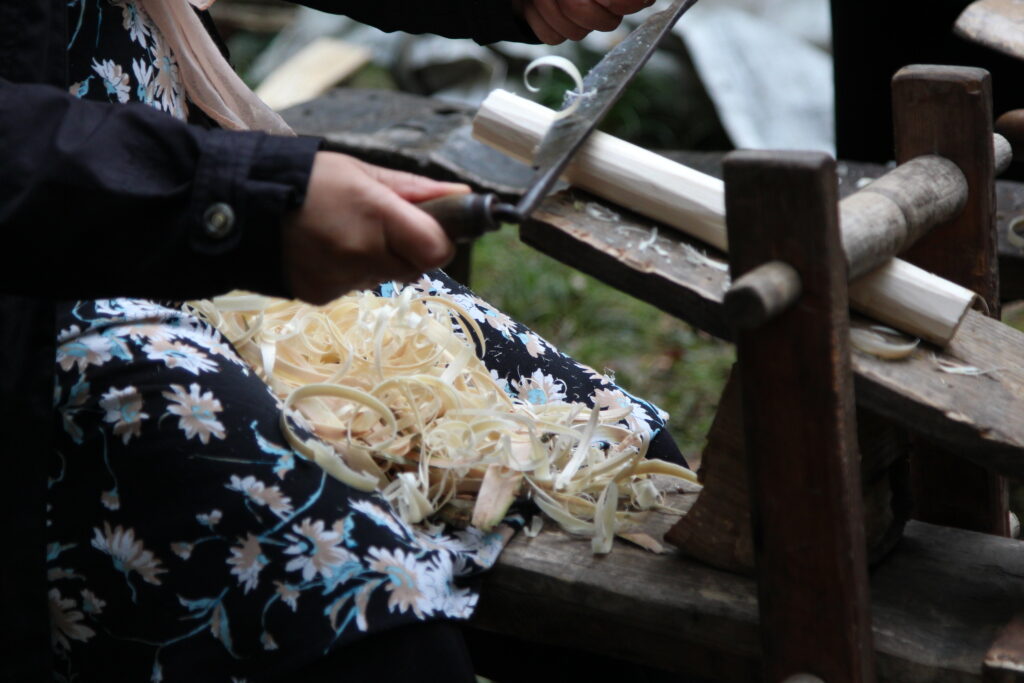
A New Year update from CANW!
Hello and welcome to our first newsletter of 2025! Happy New Year!
This is the place to share information about some of the exciting things our members have been doing over the last few months. It’s also a place to share upcoming projects, workshops and events with our community of members. I hope you’ll enjoy reading and if you have anything you’d like to include in the next edition, then please drop me a line on newsletter.canw@gmail.com.
Thanks! Emma
Upcoming Events
CANW AGM 31st January 2025
Sprint Mill
Meet at 18:00 for food, chat & social, meeting starts at 19:00, followed by friendly vibes & tunes
31st Jan, meeting will start at 19:00, but arrive from 18:00 for Jacob’s Join.
Edward and Romola have kindly agreed to host us again at Sprint Mill (by far the best place ever).
Please come & have your say on how we can do things better.
Get involved with helping us to do things better.
Bring any surplus tools & see if you can sell them – we’ll set up a bring & buy space .
Any craft work you want to try to sell, or just showcase, please bring it along too.
Bring an instrument so we can turn it into a bit of a session.
Bring some food to share & eat other people’s.
Bring some drink to drink & drink other people’s.
Sprint Mill can be found at:
What3words: https://w3w.co/magpie.loudness.directs
OS Grid: SD515961
Google Maps: https://maps.app.goo.gl/zuqWE7HP94ArTWMo7
See you there!
Weekend in the Woods 2025 – Book Now
We have a date and tickets are available for the return of Weekend in the Woods! While spring is in full swing we will be gathering at Silverhelme Scout Camp nestled in Arnside & Silverdale AONB.
List of courses as folows:
Sam Ansell – Westmorland Panels
Tony Morgan – Leather sheaths
Matt Whittaker – Blacksmithing
Jane Bradley – Rush bags
Owen Jones – Welsh frame baskets
Shannon Berry – Bowl turning
Dan Sumner – Charcoal
Tom Dillon – Spoon carving
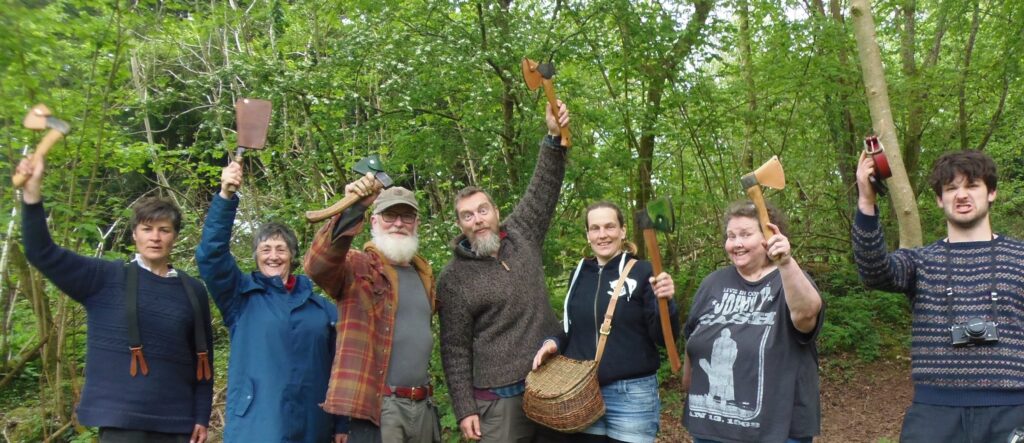
CANW visit to Bobbin Mill
By James Benson
CANW was very lucky to have its own excellent tour of the Stott Park Bobbin Mill with its caretaker and manager Tracy Shaw. Over the years CANW members have supplied much bobbin wood for the mill and in order to further understanding of what wood is required a tour and discussion was planned. Any excuse to see all the old machinery and smooth patina of some of the old woodwork!
The history of the mill is fascinating. It is the only working bobbin mill left in the Lake District today. In its heyday it was one of over 100 such mills that operated in the Lake District supplying the millions of bobbins that were needed by the Lancashire textile industry. Though automation and competition closed most of the bobbin making industry in the 20th century, Stott Park survived until 1971 by adapting to the market. When it finally closed, it had remained virtually unchanged for over 100 years.
Luckily it was saved and taken on by English Heritage. Its continued existence is a great reminder of the importance and scale of the coppice industry over previous years. Coppice wood being ideal due to already being round and close to bobbin diameter, thus less wastage during production.
After the mill tour there was a tasty chunky soup (thanks Helen!) and cake for our chairman’s birthday (thanks Dan and whoever baked the cake). This was followed by a discussion of coppiced wood supply for the mill. The specification is as follows:Diameter; 1.5-2.5 inch,
Length; minimum 2ft long.
Quality; All as knot free as possible
Species; Any hardwood except Oak (too hard!), Willow, Alder or Lime.They are looking for around 30 tonnes this winter and are paying £100 a tonne delivered to the mill. Delivery is by arrangement with Tracy Shaw, the mills manager on 01539531092. You need to ring before delivery to check they are able to accept it and also that the quota for this year isn’t already filled. Quantity and quality will be assessed by Tracy on delivery and her word is final on these matters. Once delivered invoices are paid by CANW, please send to treasurer.canw@gmail.com. Each invoice’s quantities will be checked against the Bobbin mills records so there is hopefully no room for confusion!
Woodland Ways in Sales Bank Wood
by Brian Crawley
We were now looking for a new wood to work after our decision to move from Burnbarrow. Cumbria Broadleaves were a big help in directing us to several locations in the area where there were coppice woodlands wanting attention. However, we had heard of a woodland near Colton which was owned by a business man in Ulverston with whom I had had contact in my previous employment. We had heard that a very small try at coppicing had been done in the well overstood coppice wood and contacted him to offer our services. He was very pleased to hear our proposal that we would organise a Forestry Commission 3 year woodland grant for coppicing a section of his wood which he would share with us.
We moved our equipment from Burnbarrow to our new place of employment. A very fortunate gate and track from Bessy Bank Lane gave vehicular access to our chosen workbase where we were able to locate our charcoal kiln. Another close convenient feature was an old charcoal pitstead (adjacent to which was a renowned crab apple tree) which gave us a base for a bender for dry storage and a pony shelter for Corrie.
We were hugely benefitted by the advice given to us by Edward Mills from Cumbria Broadleaves about the best area of the wood to start work and our application to the Forestry Commission was approved. We were finally ‘coppicing’ with great enjoyment.
We had been taught by Bill Hogarth to stack the un-usable branchwood onto the newly cut stools to deter browsing by deer which we did. He also told us that he collected human hair cuttings from his hair dresser and scattered them around the cut stools so that the human scent also deterred the deer. We also practiced this and the hair dresser from whom we collected turned out to be Bill’s hair dresser in Ulverston. Another interest was that the female hair dresser’s husband had been a hooper who was the maker of hoops for the coopers who made barrels.
We were never keen on fences and our revised system seemed to work quite well. We had 5 feet of growth from an oak stool in one season of re-growth but it was a lot of man- and woman-power. We revised the process by first pushing into the ground any sharp ended ones we can find, to form a firm surround about 2 or 3ft clear of the stool. Then we roughly weaved small and larger branches vertically and horizontally until the gaps between them are small enough to deter the deer. The whole thing need only be 5ft or so high. Multiple stools can be enclosed in larger dead hedges. We also received extra payment from the Forestry Commission for the re-growth protection similar to the payment for fencing.
My wife, Louise, compiled the following listing of the benefits of our ‘dead hedging’ which are; prevents deer browsing; clears the woodland floor; the rotting twigs – insect habitat – eventually disintegrate and help to feed the stool; makes habitat for birds which use them as cover/perches and find food in the rotting vegetation; gives protected ground for new maiden trees to grow; allows pedestrian access; obviates the need to burn brash.
The threat of foot and mouth disease in 2000 initially prevented us from taking our pony to the wood and we decided on a policy of felling the timber and leaving it intact on the ground. By this method we were able to fell the whole of the intended coupe that year before we were obliged to stay away from the wood. This also had the advantage of acting like our dead hedging to prevent the browsing of the new growth by the deer. Careful extraction of the useful material when were again allowed into the wood prevented any damage to the new growth which was very successful. (After the ‘hurricane’ in the south of England it was also noted that new growth was better in the areas in which the fallen trees had been left to those in which immediate clearance was carried out.)
In order to leave Corrie at the wood and to not have to transport her so often we were able to fence a cleared area of the wood at the rear of Brian Ainley’s cottage with a water supply from the stream running close to it. We also constructed a shelter for her with some fallen fir trees using the log-cabin building process.
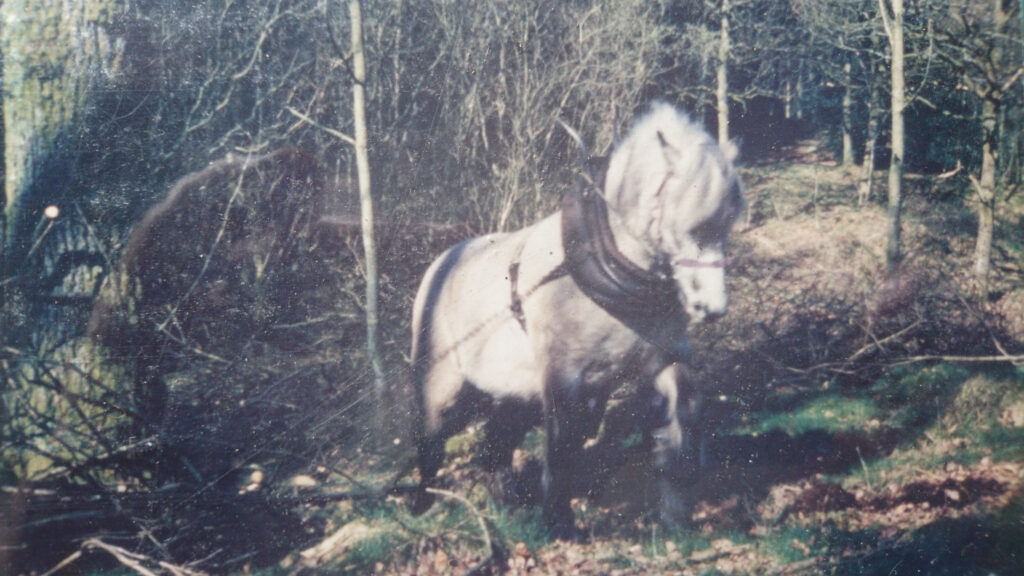
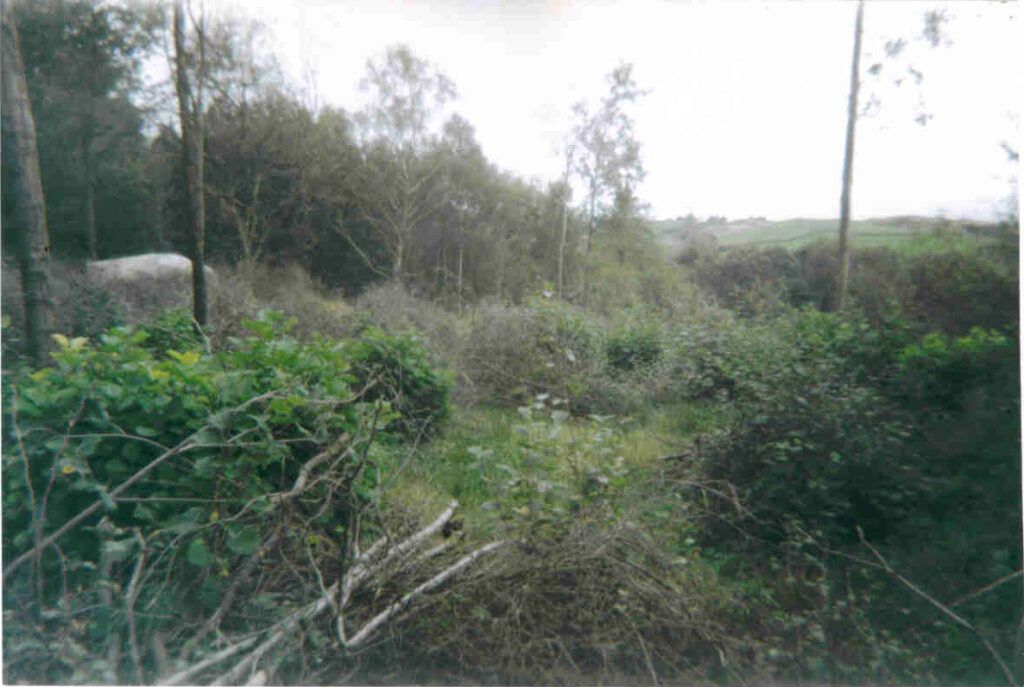
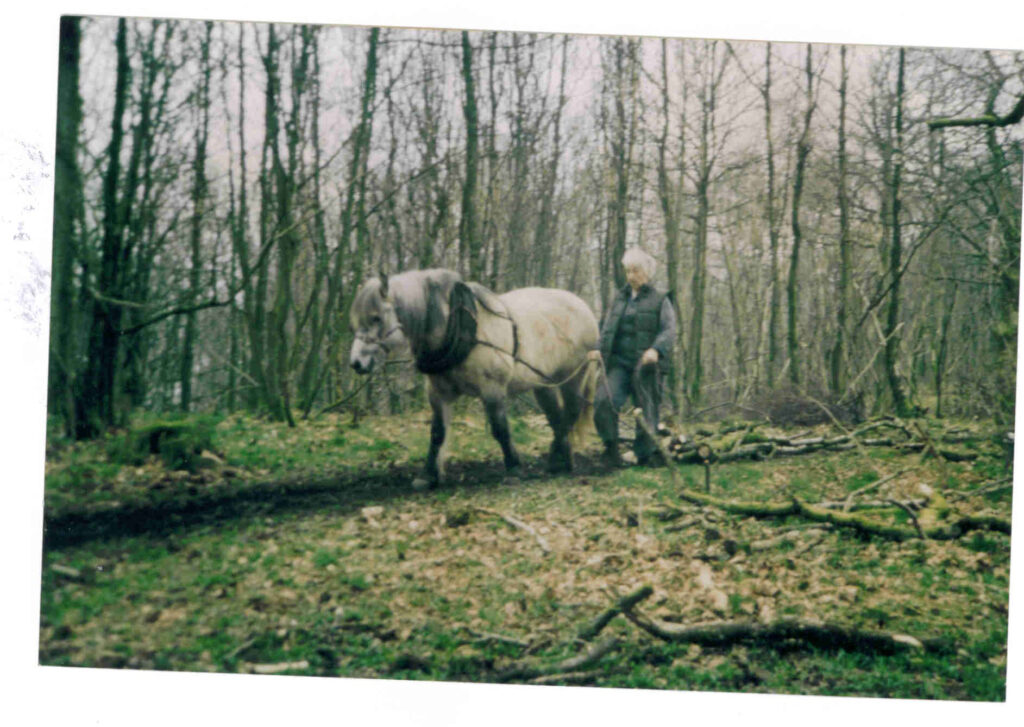
Having now an access to good coppice material we were able to produce a good selection of coppice products like woven hazel fencing – in preference to hazel hurdles – which were quite popular in many different arrangements; bird tables, bird boxes and feeders in various forms from peeled oak and birch trunks; planting troughs and climbing frames; besom brooms; garden furniture; walking sticks especially thumbsticks; peasticks and beanpoles; all, of course, in addition to the main product of barbecue charcoal. A further product, after the very sad death of Bill Hogarth, was raw material for bobbin manufacture for the bobbin mill at Stott Park, which Owen Jones related to us. We also had a nice arrangement with them to remove some of their waste wood shavings which were excellent bedding material for Corrie. Another ex-Bill Hogarth product was bundles of birch for the horse jumps at Cartmel Racecourse.
Another occupation during the summer months, again stimulated by Bill Hogarth, was attendance at local shows like the Lakeland Rose Show which became the Holker Garden Festival. A particularly significant show was close to Lockerbie in the Scottish borders where we first met a very helpful Paula. The show was opened by Princess Anne. The most significance of it was that our contact with one of the organisers led to us attending, a couple of years later with other local coppice workers, at the Royal Show at Stoneleigh Park and subsequently at Blenheim Palace where we did a barrel charcoal burn and made besom brooms.
Many interesting visitors came to see our operations in the wood. A particularly interesting group was a team of DEFRA woodland officers from Crewe which was arranged by a DEFRA contact in Penrith who we had previously met. A strange product resulted from a later telephone call from this DEFRA contact who asked if we had any twigs for sale! This led to a sample bundle of birch being posted to a firm in the north east, who were making artificial Christmas trees for displays in supermarkets across the country. They were previously buying Manzanita twigs from California which were being shipped by aeroplane because of the timing between cutting and manufacture of the model trees. The customer resulted in buying several trailer loads of besom bundles from us over several years and produced some imitation other trees as well as the Christmas variety. We viewed and photographed some of them at a Christmas display in the Arndale Centre in Manchester. Another outcome from this DEFRA contact was a visit to us by one of their photographers which resulted in a photograph being in a DEFRA booklet of me constructing a continuous woven hazel fence in a client’s garden at Broughton in Furness.
Another co-incidental and interesting visitor was Paul Jackson who was driving through our wood on his way to see Owen Jones when he observed Corrie pulling some wood and came to talk to us. It transpired that Paul was a rustic furniture maker in the Wyre Forest near Kidderminster and also supplied oak bark to the tannery in Devon from the oak which he used for his furniture. He had also had an article in a gardening magazine about how to make a rustic rose arch which I had found a few months earlier and used to make an arch for my daughter in the Lyth Valley. We got on very well with him!
We also continued with the spring-time felling of oak trees to enable the bark to be peeled to be sent to the tannery in Devon. The bark, together with that from other local ‘barkers’, was collected each year by Brian and Kay Churchill (who still collect from us). Brian and Kay stayed overnight with us sometimes but mostly stayed with our daughter on the farm in the Lyth Valley. The peeled oak was a useful product for rustic furniture.
During our time at Sales Bank the death of Bill Hogarth took place and we were involved with the formation of the Bill Hogarth MBE Memorial Apprenticeship Trust and the first Woodland Pioneers at Bill’s old workplace at Black Beck Wood. We also had our first experience of attending a charcoal earthburn with Arthur Barker. It was the ‘Millenium Earthburn’ but took place in 2001because of restrictions due to Foot and Mouth Disease. These are subjects for other articles.
In a new wood but we continued running our barbecue charcoal making courses with a very enthusiastic Ian Taylor being a student on one of them as his introduction to coppice working. We were also running courses for Weekend in the Woods at various locations with our final one and our final Woodland Pioneers training at Chapel House Wood at Staveley in Cartmel.
More will follow in the next discourse when our move to Moss and Height Springs took place after 5 years in Sales Bank Wood.
Sorry for the not very good quality of the photos.
Brian
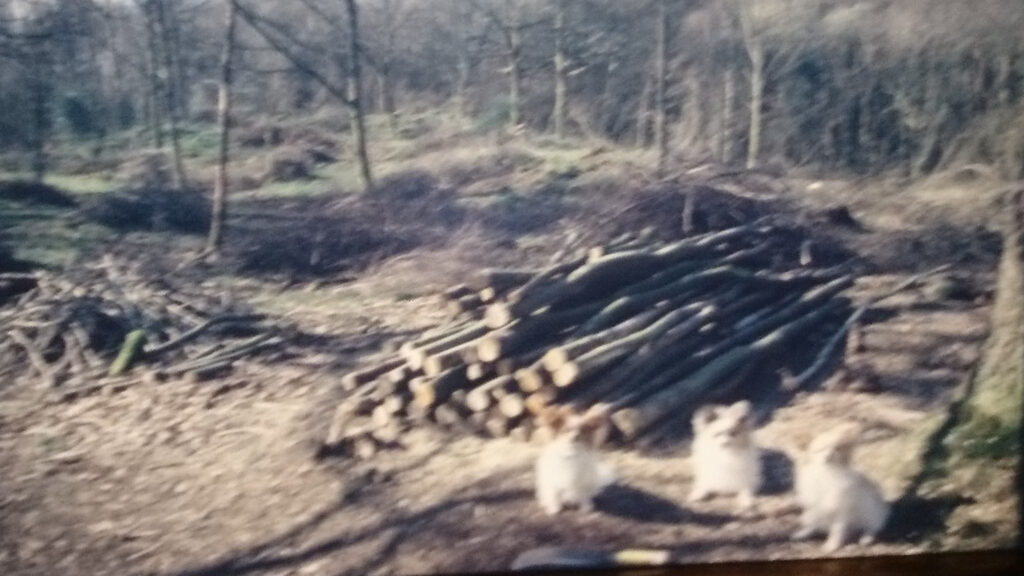
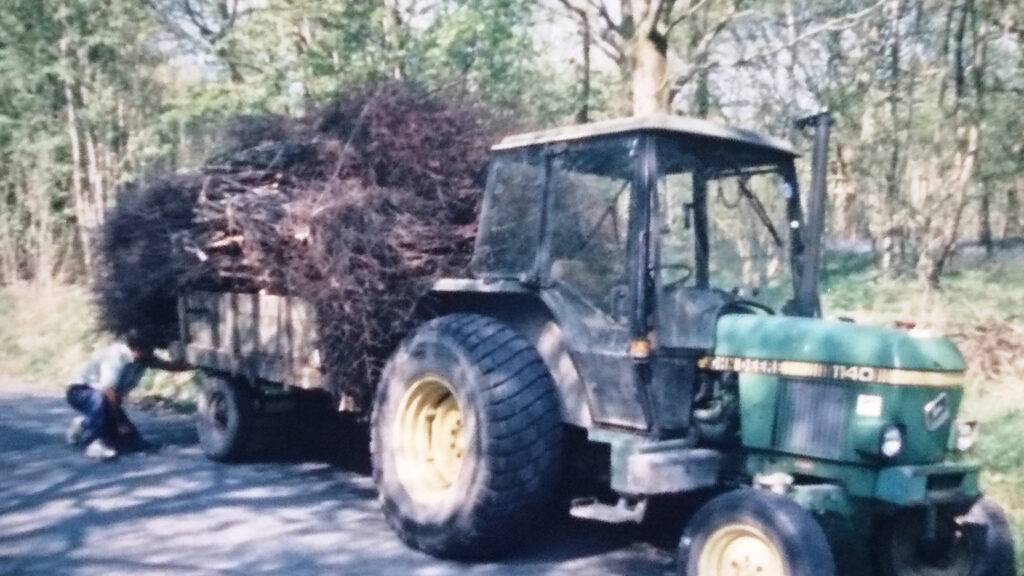
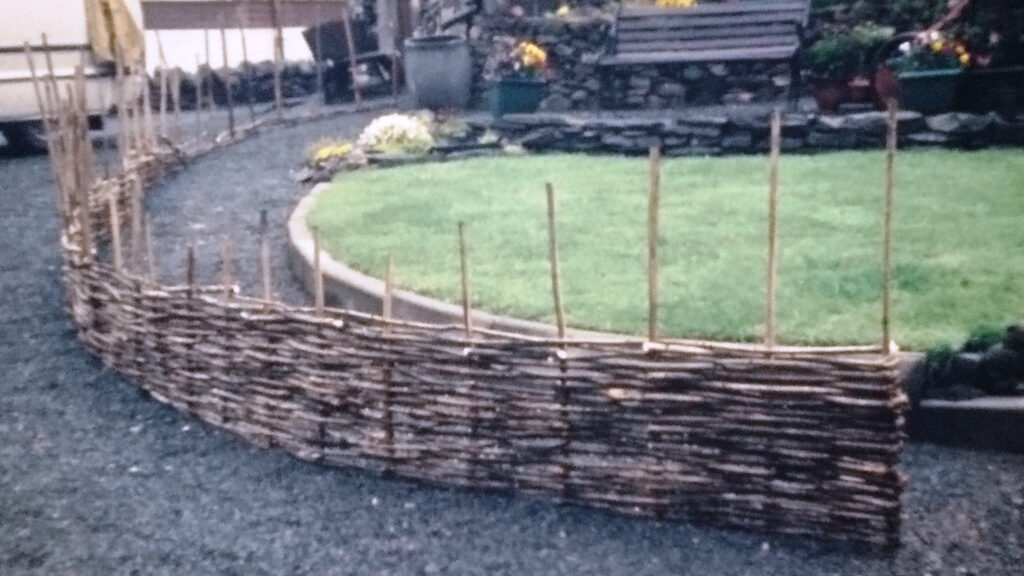
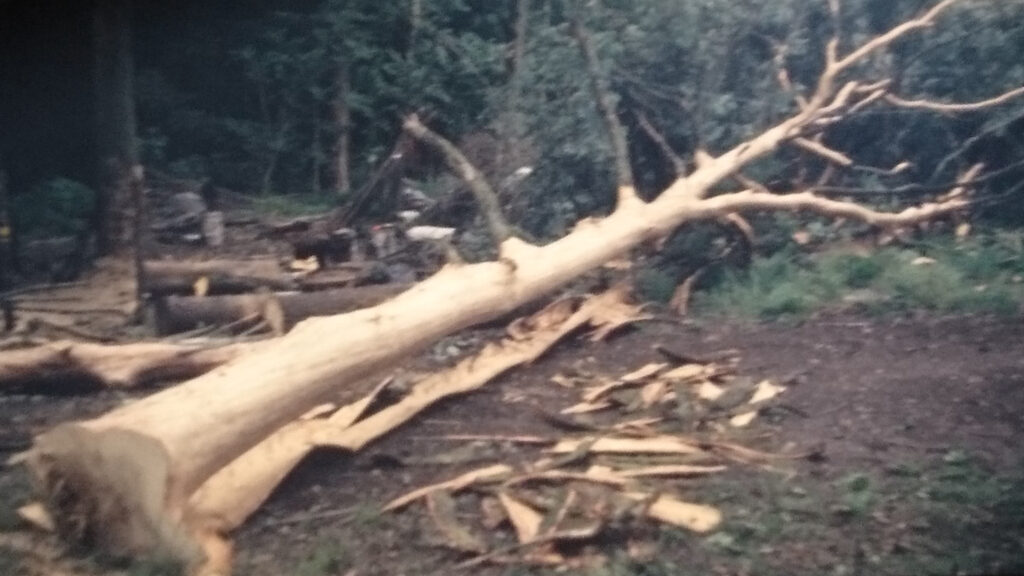
Stations of Welcome – by Sam Ansell
‘We thought we were going to this place to “be taught things” but it hasnt been like that. We have all just gelled and got on with it – more like a collaboration’ Kadija
Collaboration and co-operation are fundamental to the Coppice Co-op (the clues in the name!) – and we are chuffed that this ethos has come across strongly in our latest Woodland Engagement Project. This autumn we have been sharing the woods with a fantastic group that are based around Accrington Train Station. Stations of Welcome are a station adoption group comprised mostly of British Muslim women of South East Asian Origin. Our woodland workshop in Silverdale has been a lively spot – full of conversation, crafting, cups of tea around the fire and the delicious smells of food mingled with woodsmoke.
Fire cooking, greenwood crafts and nature connection were the three strongest themes to emerge from the project. Sharing food – preparation, cooking and of course eating – is always a great way to connect with people and develop a sense of community, as well as fostering cultural exchange. Initially the Coppice Co-op provided ingredients and recipes to cook on the fire, but it wasn’t long before the group brought along their own recipes and special jars of spices. From fried polenta to daal and naan, with welsh cakes, foraged jam, and chai to accompany, we all worked together to create our woodland feasts. It was also heartwarming to hear how cooking and socialising around a fire brought up fond memories of times spent with their families, back in the day, in Pakistan.
With all the cooking going on it seemed like making spatulas was the right thing to do! After a few sessions spent getting the basics of cleaving and shaping with froe and drawknife, the team made some great spatulas. Greenwoodworking is such a pleasurable activity that the list of projects grew and grew… Although we didn’t have time to do everything… we did manage to make mallets, woven willow plant obelisks, hazel hurdles and prayer beads in just a few short sessions.
The woods at Silverhelme provided us with shelter, learning, and plenty of inspiration. The fascinating limestone rock formations and terraces create a multitude of dingles and dells that are perfect for quiet contemplation or prayer. The dominant species in the woodland is yew -along with a real mixture of other native trees. Although this type of woodland can be found fairly frequently in the Arnside and Silverdale National Landscape, it is nationally quite rare, and has a unique, soulful character. We made sure that we set aside some time for solo exploring – then we regrouped around the campfire to discuss the plants we had observed, how woodlands can be cared for and managed well, and how it feels to spend quality time in the woods.
And before we knew it… it was time to head back to Silverdale station to catch the return train. Northern trains and Community Rail Lancashire provided free train travel for the group and the Arnside and Silverdale National Landscape provided funding through their Farming in Protected Landscapes scheme. A key goal of the project is to facilitate and encourage visits to the National Landscape from under-represented audiences. And using sustainable transport is a total winner as well. Our ongoing aim is to foster long term connections between Stations of Welcome (and their friends and families) and the Landscape in which we work. We already have plans to visit Leighton Moss RSPB reserve, and we’re sure that there will be plenty more occasions to share nourishment around the fire.
